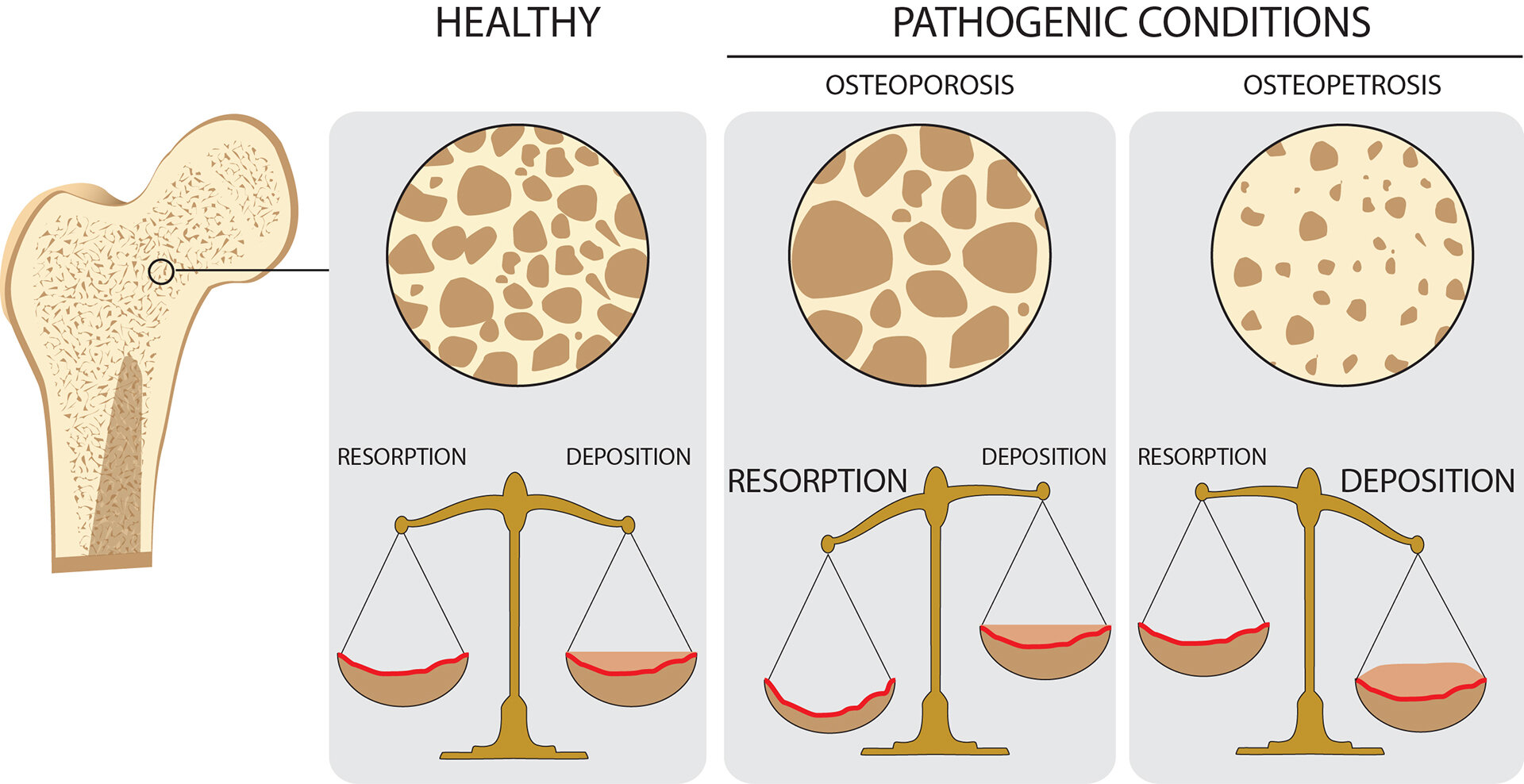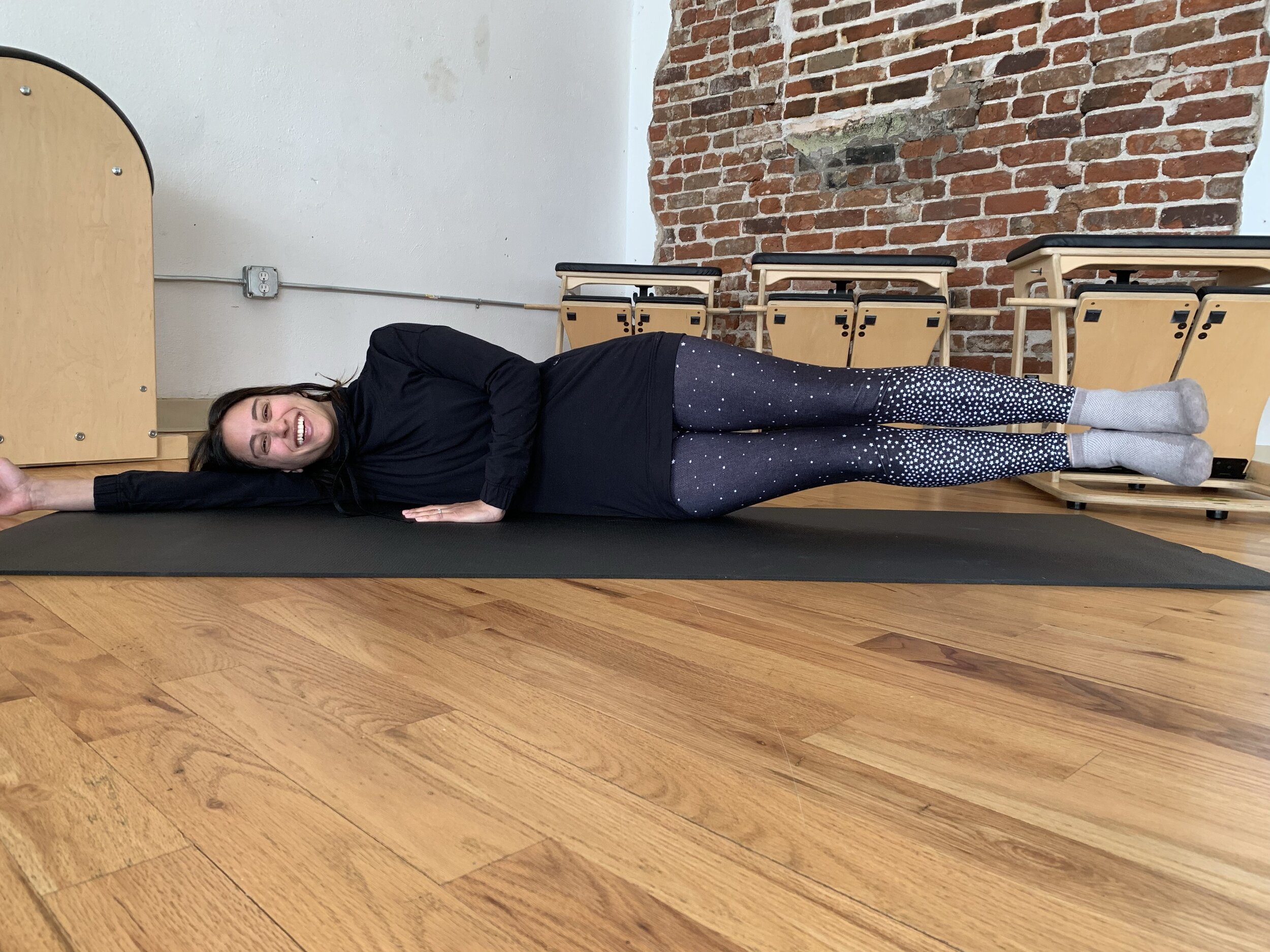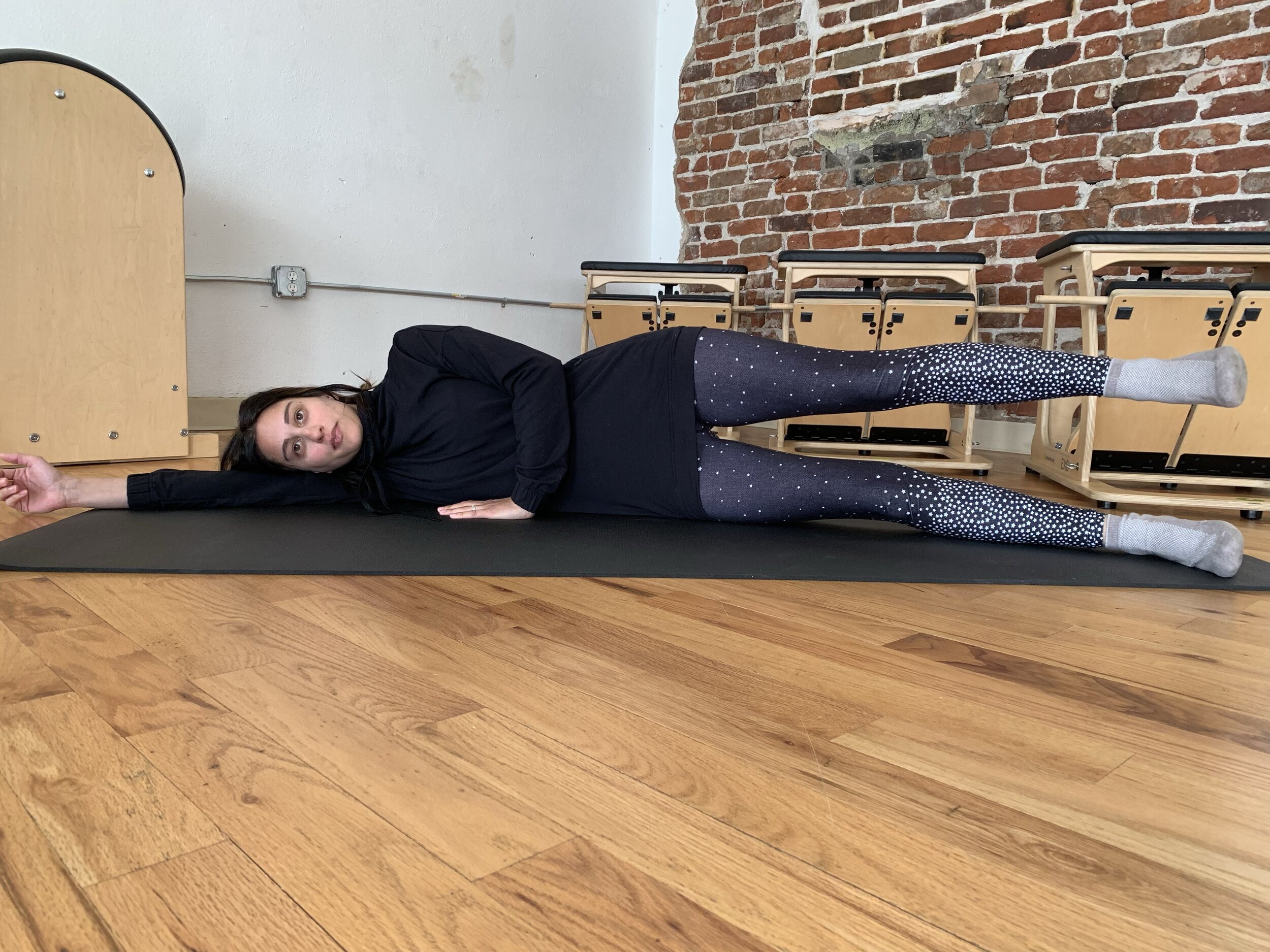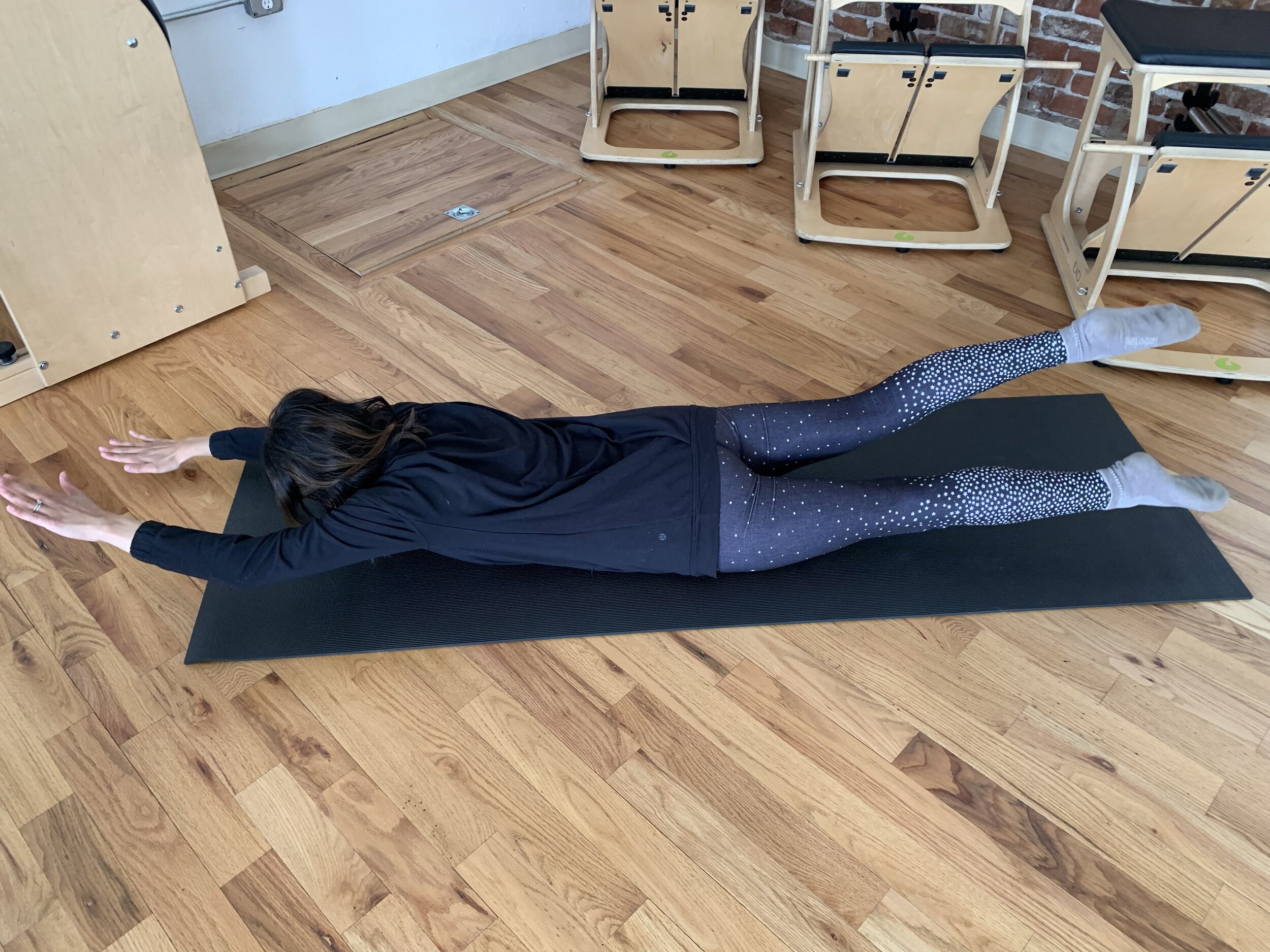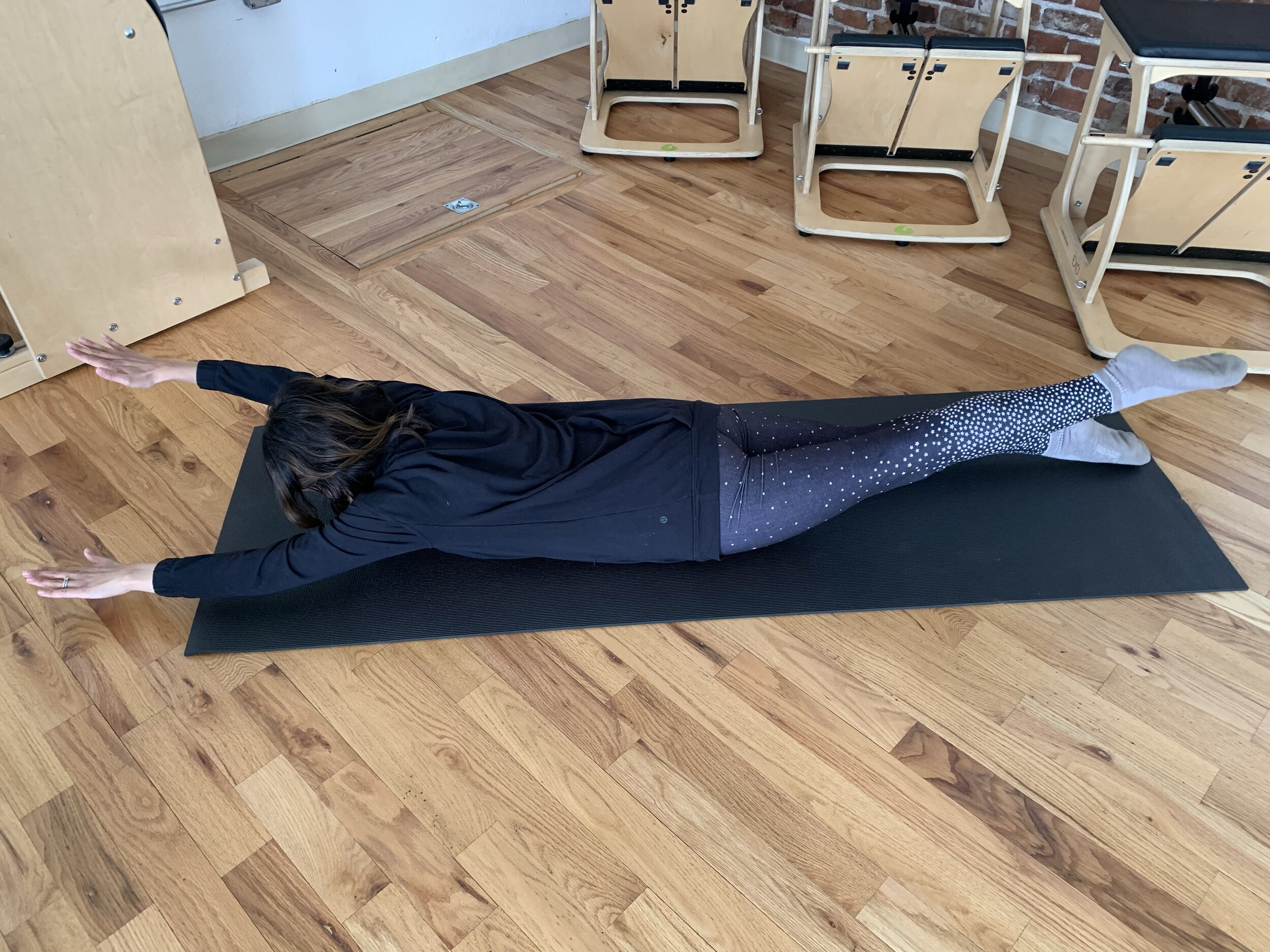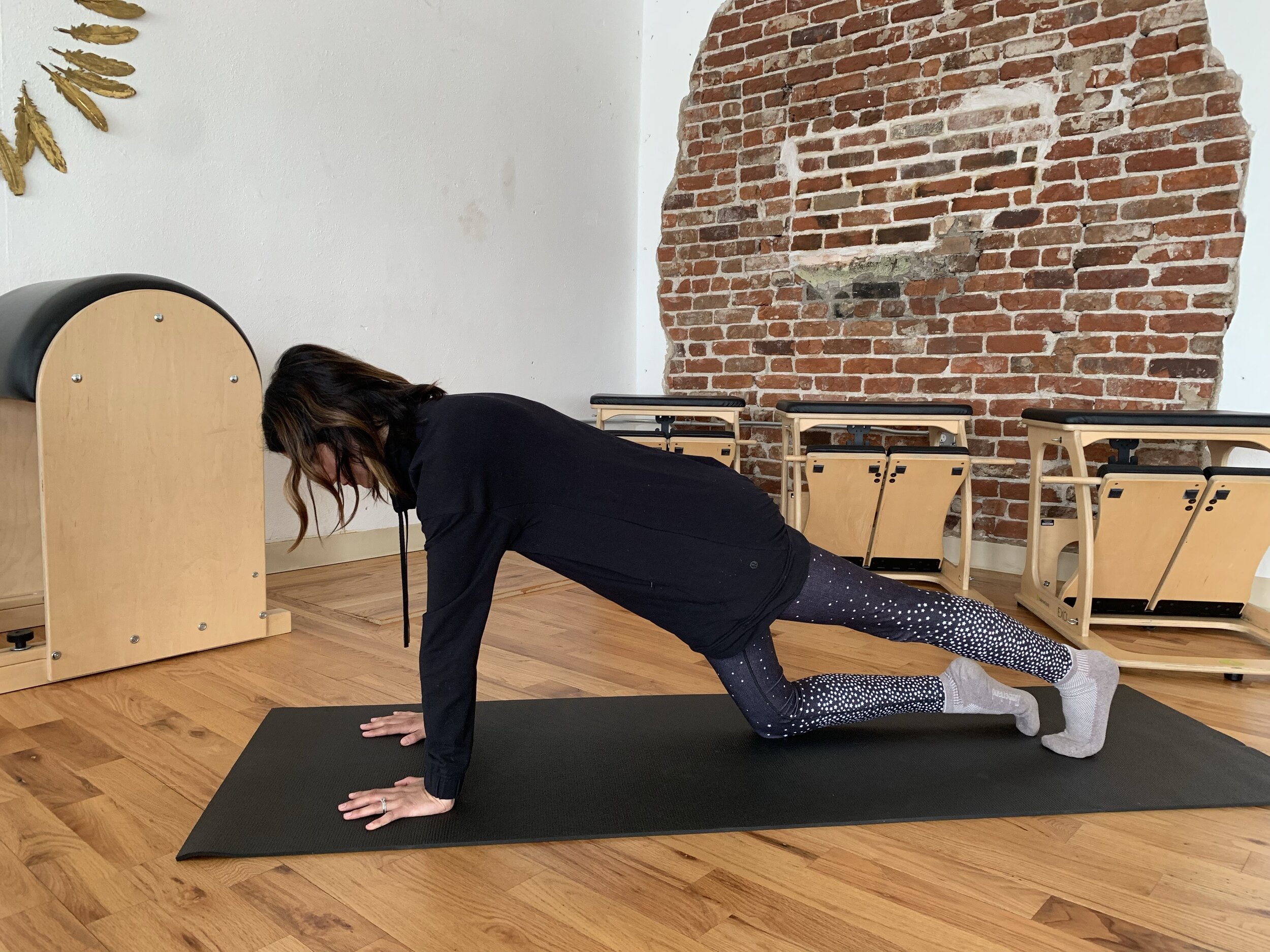Pilates for Osteoporosis & Osteopenia
You know Pilates is great for building core strength, connecting breath with movement, cross-training, and even our mental health. But did you also know Pilates is great for your bones?
Bone Remodelling: How Bones Repair Themselves
Throughout our lives, our skeletons are constantly undergoing a process of bone remodelling: the replacement of old bone tissue with new. Old bone tissue is removed in a process called resorption and new tissue is created to replace it. Estrogen, one of our primary hormones, regulates the resorption of bone tissues, ensuring we don’t remove more tissue than we’re creating. In the first half of our lives, this process keeps our bones in great shape. But around age 50, our bodies start producing less estrogen.
As a result, the resorption of bone tissue is not regulated as carefully as it was earlier in life. The process of bone remodelling can become imbalanced, causing more loss of bone tissue than creation. This may lead to osteopenia, a loss of bone density and the precursor to osteoporosis, a condition whose name roughly translates to “porous bones.”
Bones with osteopenia or osteoporosis are more brittle, less resilient, and more susceptible to breakage. Both conditions affect men and women—44 million Americans age 50 and older (1)—though women are particularly at risk.
Breaking a bone at any age creates an immediate setback. Doing so at age 50 or older is not only inconvenient, but can also pose a long-term threat to mobility. The International Osteoporosis Foundation reported that 60% of older adults who fractured a hip required assistance walking a full year after the injury (2).
To mitigate your risk of osteoporosis and osteopenia, or to treat the existing condition, the International Osteoporosis Foundation recommends regular weight-bearing or resistance exercise. In fact, movement has proven to be one of the most effective ways of slowing bone loss. Some studies even show it can aid in the regeneration of bone tissue (3).
Like our muscles, bones are living tissues. When we place force upon them through exercise, our bones adapt by building more cells and becoming more dense so they can better support the force exerted upon them (4). In addition to strengthening bones, exercise serves to improve balance and coordination and keep our bodies agile. If someone who exercises frequently slips, they’re more likely to catch themselves before falling and avoid injury (5). And if they do suffer an injury, they are likely to recover more quickly (6).
Pilates is generally incredibly safe for older adults due to the low-impact nature of the movement. And for those not diagnosed with osteoporosis, it’s an excellent way to reduce your risk. For those who have osteopenia or osteoporosis, however, it’s essential that you be cautious as to which exercises treat your condition and which may actually exacerbate it.
Pilates Exercises to Avoid if You Have Osteoporosis
Fractures of the vertebrae are among the most serious injuries for those with osteoporosis and the most difficult to recover from. To avoid doing harm to the spine, those with osteopenia or osteoporosis are encouraged to avoid spinal flexion, or forward bending, as well as spinal twists. Performing these movements while carrying weight is especially discouraged.
Alongside vertebral fracture, injuries to the bones surrounding the hip joint are particularly perilous and difficult to recover from.
To avoid injury while continuing to strengthen, those with osteoporosis or osteopenia are encouraged to practice movement that focuses on extension and hinging from the hip with a flat back. It is also recommended that they do exercises aimed at strengthening the muscles of the back, shoulders, legs, and hips.
If you’ve done Pilates, you may recognize that many exercises, particularly mat exercises, include forward flexion and twisting of the spine. Despite these exclusions, once flexion is avoided, Pilates can be incredibly beneficial for strengthening the bones.
Why Pilates is Beneficial for Osteoporosis & Osteopenia
The intentionality of Pilates promotes concentration and a strong mind-body connection. The stronger this relationship, the more likely you are to engage quick reflexes and catch yourself before falling. Plus, with work on balance and control, you are less likely to lose your balance in the first place.
The emphasis of Pilates is commonly publicized to be around core strength. While we certainly work on engaging the muscles of the core—the abdominals, muscles surrounding the spine, and pelvic floor—Joseph Pilates first created his method with the intention of achieving overall symmetry along the entire musculature of the body. Whether at risk of bone loss or not, this symmetry is wonderfully beneficial for the health of the body.
To make the most out of doing Pilates when you have osteoporosis or osteopenia, we highly recommend starting with at least one private session. (Pilates Collective Denver offers a free intro private—take advantage!) The individual attention of a private session will allow your instructor to assess your movement patterns and make an informed recommendation as to the best way for you to practice.
Whether in a private or group session, be sure to inform the instructor of your diagnosis. Ask if she’s familiar with movements those with osteoporosis can and cannot perform, and if she’s comfortable providing modifications for contraindicated movements. You may also want to ask her if she is planning any exercises that involve a risk of falling, and if so, how you can modify to make them safer.
Pilates Exercises for Osteoporosis & Osteopenia
To get a taste of doing Pilates with osteoporosis, we’ve laid out three of our favorite mat exercises for strengthening the bones.
1) Side Lying Legs
The Side Lying Legs series is great for strengthening the whole body, especially the muscles of the hip, inner thigh, and obliques.
Set up by laying on your right side with your head resting on your right bicep. Support yourself with your left hand by pressing it into the mat just in front of your chest. Be careful not to let your left shoulder creep up by your ear. Lift the right side of your waist away from the floor to engage your obliques, and reach your top leg longer. At the same time, find a neutral position of the pelvis and pull your navel towards your spine (without tucking your tailbone underneath you).
Simply finding this alignment may be enough—it’s a lot of work! If this is plenty, simply hold for a few moments while taking deep breaths, relax, and hold again.
If you’re ready for more, take an inhale and glue your legs together. On your exhale, maintain all of the core engagement and float both legs just an inch or two off the mat. Inhale to tap your legs back down onto the mat and exhale to lift them back up. Try for two sets of 10, resting between sets.
Find your alignment again and float both legs up off the mat. This time as you exhale, lift just your top (left) leg a few inches and lower it back down to tap the bottom (right) leg. Repeat for 10. On your last one, keep your top leg lifted. Exhale to lift your bottom leg up to tap the top leg and inhale to lower just the bottom leg. Repeat for 10. Rest, then try both sets again. Once you’re finished, roll over to repeat on the other side.
2) Swimming
Lay on your stomach with your legs reaching long behind you and your arms reaching in front of you. Engage your abdominals by pulling your navel towards your spine and pressing your pubic bone into the mat. On an inhale, float your arms, legs, and head just slightly off of the mat. Be sure to keep your gaze down. If you look in front of you, it’s easy to overextend the cervical spine.
Staying in this hovering position, lift your right arm and left leg slightly higher. As you lower them back down, lift your left arm and leg. Continue with this alternating swimming motion, speeding up so you do 3 sets on each inhale and 3 on each exhale. Try for 10 sets, rest, and try again.
If you feel any tension in your lower back, rest on your belly. When you try again, focus on pulling your navel into your spine. You may also want to separate your legs slightly and keep your arms and legs a bit closer to the floor.
3) Full or Forearm Plank
Planks are one of the most efficient full-body exercises out there. You can either do planks on your palms or forearms—both will engage your back, abdominals, legs, and chest.
Set up by coming into a table position with your knees and either your palms or forearms on the mat. Be sure your shoulders are directly above your palms if you’re in a full plank, or above your elbows if you’re in a forearm plank. On an exhale, extend your legs behind you one at a time.
Keep your abdominals engaged by pulling your navel up towards your spine. Think about pressing the floor away with your upper body to avoid collapsing into your chest. All the while, engage through your legs, pulling your kneecaps up your thighs. And of course, keep breathing.
Stay for 10 breaths, come down to your knees to rest, and repeat.
If holding a plank feels too difficult, start in a table position and extend one leg at a time into plank, then lower one knee at a time back into your table. Repeat this 5 times leading with one leg, then 5 times leading with the other.
If your body loved these movements, check out Buff Bones, a Pilates-based movement system specifically designed for those with osteoporosis. And if you’re ready for more, complete this form to take advantage of a free introductory private!
1) https://www.drweil.com/experts/osteoporosis-and-pilates/
2) https://www.iofbonehealth.org/facts-statistics#category-18
3) https://www.health.harvard.edu/staying-healthy/slowing-bone-loss-with-weight-bearing-exercise
4) https://orthoinfo.aaos.org/en/staying-healthy/exercise-and-bone-health/
5) https://www.reuters.com/article/us-health-exercise/long-term-exercise-by-older-adults-tied-to-lower-risk-of-falls-idUSKCN1PC2NO
6) https://experiencelife.com/article/how-exercise-heals/

